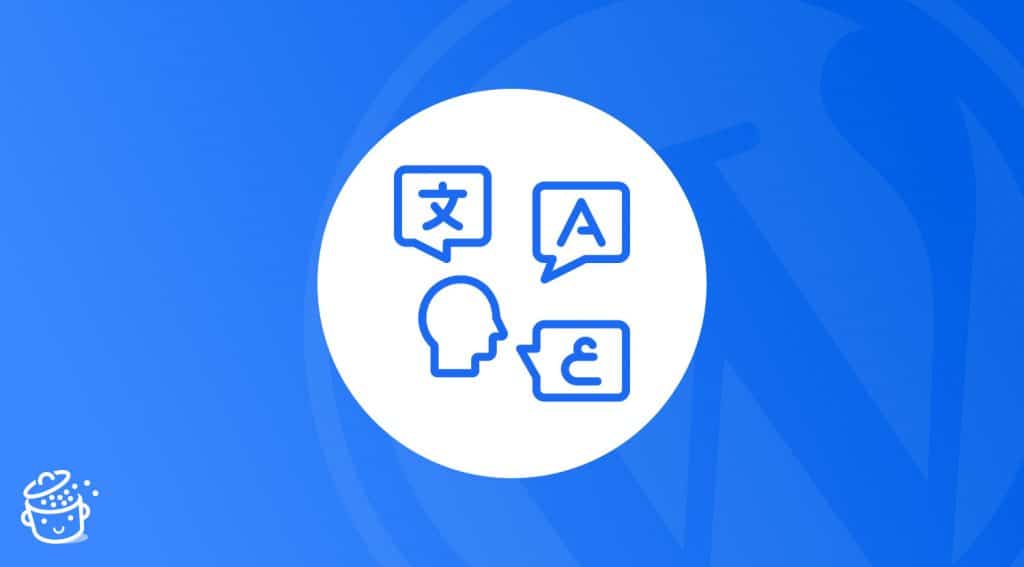Most businesses want success on a global scale.
That’s why they choose to translate their website into a variety of languages. But, when you’re dealing with a bilingual or multilingual site, there’s more to consider than just translating content.
After all, when you go global, you’ll be managing multiple markets with different requirements.
One such consideration is multilingual SEO. Master this, and you massively increase the likelihood of your site being found by relevant visitors in other countries.
If you’re unsure where to begin with this, keep reading.
In this article, we’ll take a look at multilingual SEO and share a few tips for SEO success.
Overview
What’s multilingual SEO?
Multilingual websites appeal to visitors from other countries that might not be comfortable engaging with the original site’s language. Needless to say, these visitors will most likely conduct Google searches in their own language.
As such, multilingual SEO refers to optimizing your website’s SEO for a different language.
This comes in handy if you’ve translated your site into the language in question and you want to ensure that relevant users are exposed to this version of your site.
Why’s multilingual SEO important?
Think back to why you translated your website in the first place.
No doubt, the goal was to reach new markets and better cater to the needs of your global customers. By targeting different regions, you improve the chances of ranking high in search engines across several languages.
This goes a long way to expanding your potential audience, which should equate to a boost in sales.
After all, we all know that selling online is easier when you can target your products, emails, content, etc., to a specific demographic. And by translating your site into your customer’s preferred language, you take a massive step towards this.
However, translating your website into multiple languages doesn’t immediately translate into good rankings. In fact, if you ignore multilingual SEO, your rankings could actually suffer.
For example, suppose your website content is very similar on multiple pages. In that case, those pages will all compete against one another and consequently harm each other’s rankings in the process.
Also, if you fail to optimize your site for multilingual SEO, you risk French-speaking users never finding your French site and navigating to your English one.
This defeats the purpose of having a multilingual site in the first place!
How to optimize your multilingual site for SEO
Multilingual SEO addresses aspects of your website that you might never have thought about before. But don’t worry – we’re covering the three most important steps to ensuring multilingual SEO success, which are:
- Content translation
- Domain and URLs
- Hreflang tags
Let’s take a look at each one in detail:
Content translation
In any language, high-quality content is crucial for SEO success. But when you expand into multilingual territory, you’ll need to double your efforts.
For example, to succeed in another language, you’ll need to either create new content in that language or adapt and repurpose existing content.
Furthermore, with the translation, high-converting keywords and tags might change. So you’ll need to conduct keyword research for the language and location you’re targeting.
Don’t simply translate your existing keywords with Google Translate!
Remember, the same or similar words can take on a completely different meaning in another language. Getting these subtleties wrong could have negative consequences.
For example, Japanese has two different words for the number “Four”. One of those words has close connotations with death and is often avoided in conversation.
Unfortunately, Google Translate might not pick up on this subtlety, and you’ll quickly lose points with your customers there.
Let a native speaker read through your adapted content to ensure there aren’t any awkward mistakes that could be avoided.
Rather than seeking translation for your articles, seek transcreation to create a more engaging and meaningful reading experience.
Instead of literal translation, transcreation stays true to the meaning of the original text. Still, it adapts the copy based on culture, sayings, idioms, and figures of speech relevant in other languages.
Domain and URLs
As you create your multilingual site, consider new domains and URLs for your pages. This is an integral step that shouldn’t be overlooked as it’s how you’ll ensure customers from a particular region land on the correct version of your site.
You have different options when it comes to structuring your domains:
- Get the ccTLDs (country code Top Level Domains) for your chosen languages. For example, the .de extension for Germany, .fr for France, etc. Your URL would then look like this: yoursite.de.
- Create subdirectories for your chosen regions. Your site will still have its original .com domain code but with the appropriate extension. For example yoursite.com/de/.
- Put multilingual content into a subdomain. For example de.yoursite.com.
A subdirectory or subdomain is often favored by Google when it comes to multilingual SEO best practices because Google recommends using dedicated URLs’ that include a language indicator.
Here, you just have to buy one non-country-specific domain and then use it to host all the versions of your website. This way, you don’t have to optimize different websites.
Hreflang tags
Cue, Hreflang tags.
Hreflang is a markup in your site’s code that helps Google identify users to whom it should offer a site based on their language and geolocation.
As such, Hreflang tags are essential if you’ve translated the same content into multiple languages.
Unfortunately, the process requires more technical knowledge and is somewhat complex. As such, this is often where multilingual SEO can go wrong.
Google mentions three ways you could implement Hreflang annotation:
- Sitemap: Submit information about your language version to Google as a sitemap.
- HTML link element in the header: Find the <head> section of your website and paste in a link element that points a foreign language version of your site to the correct webpage. For example <link rel=”alternate” hreflang=”de” href=”http://yoursite.com/de”/>. This would assign the German version of that webpage to the domain yoursite.com/de. Some multilingual plugins also handle this SEO feature for you, like HREFLANG Tags Lite.
- HTTP Header: If you publish non-HTML content on your site, such as PDFs, you can use an HTTP header to link to a different language version of a URL.
For most, creating a sitemap or HTML link are the most straightforward solution. With an HTML link, you can also specify non-obvious language links.
For example, say you want to link French-speaking users in Canada to your French site, you could create a link to the extension:
fr-CAD: French content for users in Canada.
It’s a complicated topic, so we recommend you browse Google’s documentation on establishing localized versions of your page.
Don’t forget key SEO best practices
In this article, we’ve covered how to ensure your multilingual site expansion aids, rather than hinders, your SEO in other regions.
However, you’ll only enjoy SEO success if you’re already following best SEO practices.
So, while you’re optimizing for multilingual SEO, don’t forget to bring your site up to the best possible SEO standards.
Great SEO requires:
- Compressed/optimized images. Large images can negatively impact the load speed of your site. Google prioritizes websites with faster load speeds, so do whatever you can to keep your site light!
- Easy navigation. Make it easy for users to navigate your site. Create a sitemap for Google, so the engine knows where your navigation leads. Remember, the most important pages should be reachable with just a click.
- Make your site mobile-friendly. Mobile accounts for more than half of all web traffic, and search engines know this. That’s why sites with good mobile performance and mobile accessibility rank higher.
- Improve the accessibility of your site. Ensure everything is easily readable. Use large fonts and clear contrasts. Check your site can be navigated using a keyboard alone and that screen readers can quickly jump to the most important links.
- Include important keywords in your URLs, tags, and website content. Optimize blog posts and web pages for specific topics to rank high for what customers are searching for.
Are you ready to improve your multilingual SEO?
By following the advice above and some patience, it’s possible to implement multilingual SEO for your website.
This goes a long way to ensuring different language versions of your site reach their intended audiences. However, multilingual sites are complex projects that require a careful touch and lots of consideration.
Remember that SEO is a slow process. Once you’ve optimized your site, it takes time for your international pages to rank well in search engines. But, in the long term, the effort will be well worth it.
Multilingual SEO is the next step to connecting with customers all over the world.
So, what are you waiting for? Start optimizing your site today. Good luck and let us know how you’re handling it!

